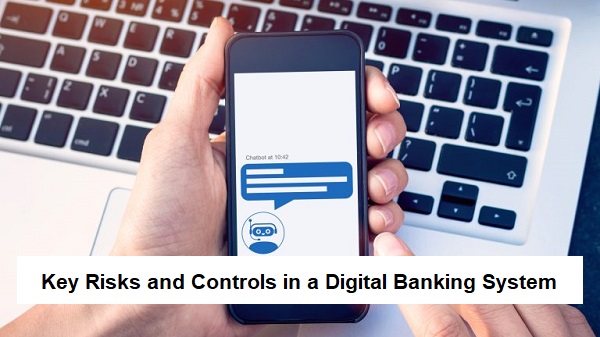Digital banking systems offer unmatched convenience but bring significant risks such as data breaches, fraud, and regulatory non-compliance. Institutions must implement strong controls to safeguard sensitive transactions and ensure operational efficiency while addressing security and compliance challenges inherent to digital platforms.
As digital platforms increasingly handle vast amounts of sensitive data and financial transactions, institutions must be vigilant in identifying and mitigating potential risks. The most pressing risks in digital banking include data security breaches, fraud, regulatory non-compliance, operational downtime, and cyberattacks. Each of these risks requires robust controls to safeguard both customers and the institution.
Data Security Risks arise from unauthorized access to sensitive customer information, potentially leading to data breaches and reputational damage.
– Encryption: End-to-end encryption of customer data during storage and transmission.
– Access Controls: Multi-factor authentication (MFA) for user access to sensitive information.
– Monitoring: Implement real-time monitoring for unusual login patterns or suspicious activity.
– Data Masking: Limit the exposure of sensitive data, showing only partial information when not required.
Fraud Risk is a major concern, especially as phishing attacks and account takeovers become more sophisticated.
– Fraud Detection Tools: Use machine learning-based fraud detection systems to monitor transactions in real time.
– Transaction Limits: Set daily transaction limits for new or suspicious accounts.
– Two-Factor Authentication: Enforce 2FA for all sensitive transactions, including transfers and password changes.
Regulatory Compliance Risk involves adhering to data protection laws and financial regulations, which can carry significant penalties if violated.
– Audit Trails: Maintain detailed logs of all financial transactions and user actions to support compliance audits.
– Reporting Tools: Build automated reporting for regulatory filings.
– Privacy by Design: Ensure all product features comply with data privacy laws.
Operational Risk, including system downtime and performance issues, can disrupt customer service and erode trust.
– High Availability Architecture: Implement fail-over systems and load balancing for continuous uptime.
– Disaster Recovery Plan: Have a tested disaster recovery plan in place with off-site backups.
– Scalability: Ensure that the system can scale with transaction volume and user growth.
Identity Theft and Account Takeover Risks threaten customer accounts, and need to be mitigated in any digital banking system to prevent unauthorized access.
– Behavioral Biometrics: Use behavioral analytics to detect anomalies in user activity.
– Alerts and Notifications: Send instant alerts to customers upon any significant account activity or login from new devices.
– Password Policies: Enforce strong password policies and regular password changes.
System Integrity Risks can arise from vulnerabilities in third-party software, leading to potential compromises.
– Vulnerability Management: Conduct regular vulnerability assessments and penetration testing.
– Patch Management: Ensure timely updates to all system components, including third-party software.
– Code Reviews: Implement strict code review processes before any updates or releases.
Business Continuity Risks, such as natural disasters or system crashes, necessitate robust plans to ensure continuous operation.
– Backup Systems: Implement real-time backups of customer and transaction data.
– Business Continuity Plans (BCP): Develop and regularly test BCPs to ensure minimal downtime in case of an emergency.
– Cloud Infrastructure: Use geographically dispersed cloud-based infrastructure for redundancy.
Transaction Risk includes the possibility of unauthorized or incorrect transactions, which can cause financial loss.
– Transaction Verification: Require multiple layers of approval for large or unusual transactions.
– Audit Trails: Maintain complete records of all transactions for traceability and error correction.
– Real-Time Settlement: Implement real-time transaction verification and settlement to avoid delays or failures.
Finally, Cybersecurity Risks pose a constant threat to digital banking platforms. With sophisticated attacks like malware, DDoS, and ransomware on the rise, measures need to be in place to protect the company’s core assets and data.
– Firewall and Intrusion Detection Systems (IDS): Deploy next-generation firewalls and IDS to monitor network traffic.
– Regular Security Audits: Perform periodic security audits and risk assessments to identify vulnerabilities.
– Incident Response Plan: Develop and practice an incident response plan for cyber-attacks.
Managing these key risks through effective controls helps ensure that digital banking systems remain secure, reliable, and compliant, while providing customers with the confidence to conduct their financial transactions online.
Like this article? Leave a comment

